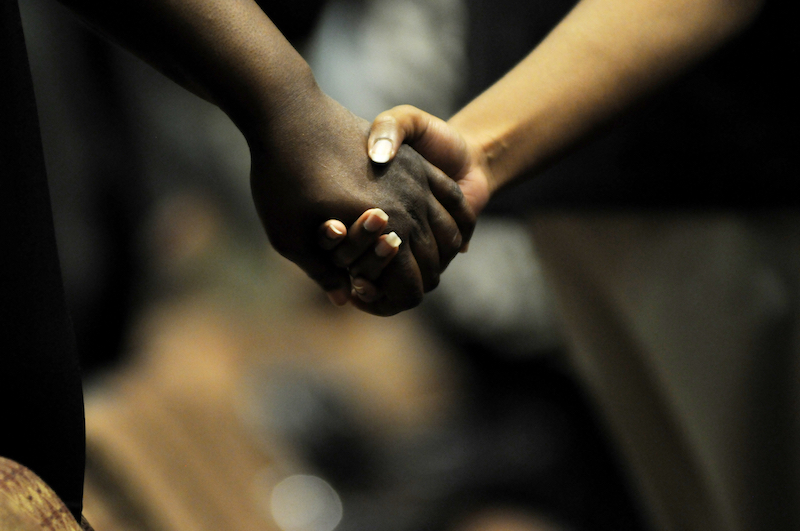Recently my denomination of churches, Every Nation, gathered for our global get-together in Cape Town, South Africa. There was a tangible buzz in the air among the 5,000 or so delegates. Most striking was the diversity of the room. As the conference opened, a funny story was told.
A young American man was introducing himself to the woman who would later become his wife. In meeting her, he broke almost every rule of polite Japanese society. As she began to bow, he went in for the handshake. Their heads collided, leaving them both with quite the headache. What makes for a funny story now was terribly embarrassing in the moment.
And so it goes for many of our attempts at diversity.
Headaches Aren’t New
Jesus’s disciples were all from the same Jewish culture and ethnicity. They grew up just miles from each other. They must have been utterly gobsmacked, then, at Jesus’s instructions: “You are to bear witness to these things to all nations.” They were Jewish, living in the epicenter of Judaism, and following their Messiah. What in the world could he mean by sending them to “all nations”?
Since the church was initially slow to get around to the “all nations” part, God allowed a severe persecution that scattered the homogenous Jewish church across the Roman world, like seed tossed into the wind.
Headache.
It wasn’t long until the Jewishness of Christianity came to blows with the Gentileness of the surrounding culture. As more and more non-Jewish folk filled the fledging church, the racist, sectarian, and nationalistic parts of the flesh began rising up. The first church council was called to deal with some of that tension (Acts 15). Large sections of Galatians and Romans were written to alleviate confusion over racial boundary markers and right belief in Jesus Christ. Peter himself—the rock!—was publicly called out by Paul for succumbing to this confusion and refusing to eat with image-bearers of a different ethnicity (Gal. 2:11–14).
Headache.
No Headache, No Multi-Ethnic Beauty
Gratefully, Peter repented. But have we?
Many of us sit happily in the pews of our churches surrounded by persons of our own cultural tribe, playing the music of our own preference, while wondering why those around us look just like us. We develop whole (bad) theologies ensconcing our musical and aesthetic preferences, effectively barring the door from those whose culture is too expressive, too loud, or too different.
And we wonder why they don’t come. Here’s why: We don’t want the headache, and they know it.
I’m not saying every church has to meet some false standard of diversity. Nor am I suggesting churches mostly composed of one ethnic group are bad. Yet if any church isn’t concerned with the other tribes—unconcerned to reach them, to know them, and to be known by them—how is that not the same kind of self-preferential partiality of which Peter was guilty? We carry the lunch tray of our cultural preferences to the table filled with persons like us because we just don’t want the headache of dealing with the other.
I’m a white guy pastoring a multi-ethnic church, and it hasn’t been easy. I’ve tried to shake hands when I needed to bow. I’ve said ignorant things; I’ve hurt feelings; I’ve made mistakes. So why do it? Why not just be happy to pastor a white church?
Because the hope of a multi-ethnic church is worth it.
Refuse the Headache, Rob the World
The church isn’t primarily about worship styles, preaching methods, budgets, and buildings. The church is about being an embassy of heaven, an outpost of God’s kingdom on earth. It’s about embodying a picture of the future world that has come rushing backward into the present—and, while embodying that heavenly future, inviting people into it through faith in the gospel. But if we refuse to embrace the challenge of understanding why our black neighbors have a hard time in our white churches, how different are we from the local country club?

Such tendencies made Jesus angry. When he walked into the temple, he was furious at what he saw (Mark 11:15–17). The homogenous Jewish community had filled the one place the non-Jewish world could come and worship Yahweh. Jesus wanted Israel to understand that his house was to be a house for all ethnicities—pantos ethnous (Mark 11:17). He wasn’t angry because he didn’t like commerce. He was angry because God’s people had forgotten their role in the world: to be a light to the Gentiles. They didn’t want the headache of all those people in their place of worship.
Embrace the Headache, Embody Gospel Hope
Our nation—and our world—are rife with sectarian, racist, and tribal animosity. From Rwanda to Russia, South Africa to south Alabama, humans have always preferred those like ourselves.
But aren’t you glad Jesus didn’t feel that way? I’m so grateful he embraced the headache of welcoming outsiders into fellowship with him. I’m glad he did the hard work of figuring out how to include my tribe, and yours, into his everlasting kingdom.
As churches, we have a unique opportunity to tell the story of gospel hope with our sermons and illustrate it with our lives. For most of us white people, it means being willing to relinquish the privilege of not having to think about such matters, and to stand up for those who do. For non-white believers, it may mean continuing to model Christlike longsuffering in spaces where your ethnic identity is often overlooked or discredited.
Such gospel living must persist among us, especially when your brother bumps your head with his handshake.
Is there enough evidence for us to believe the Gospels?
 In an age of faith deconstruction and skepticism about the Bible’s authority, it’s common to hear claims that the Gospels are unreliable propaganda. And if the Gospels are shown to be historically unreliable, the whole foundation of Christianity begins to crumble.
In an age of faith deconstruction and skepticism about the Bible’s authority, it’s common to hear claims that the Gospels are unreliable propaganda. And if the Gospels are shown to be historically unreliable, the whole foundation of Christianity begins to crumble.



































